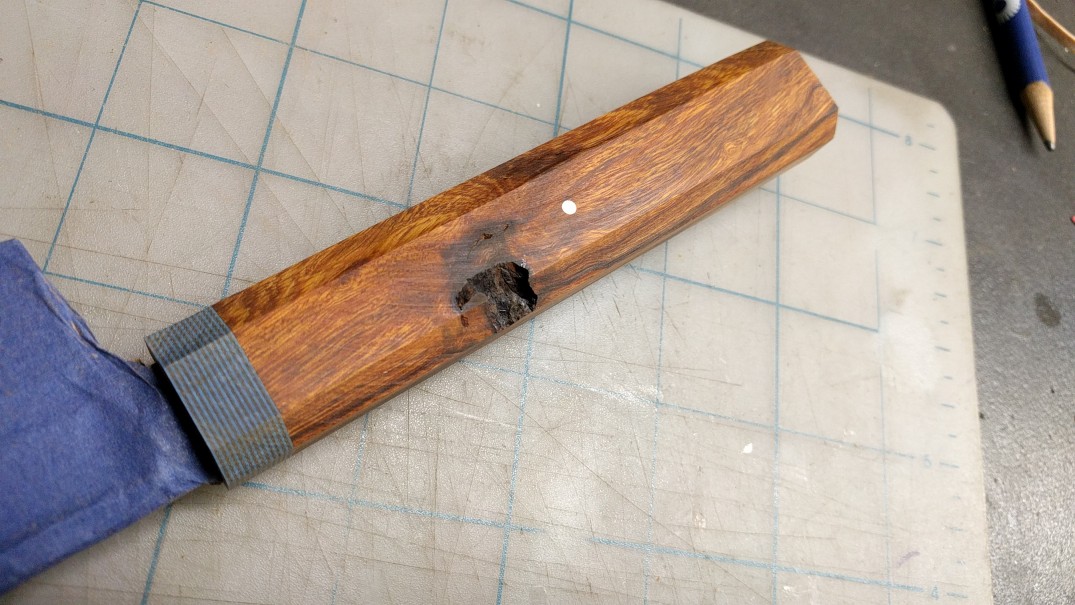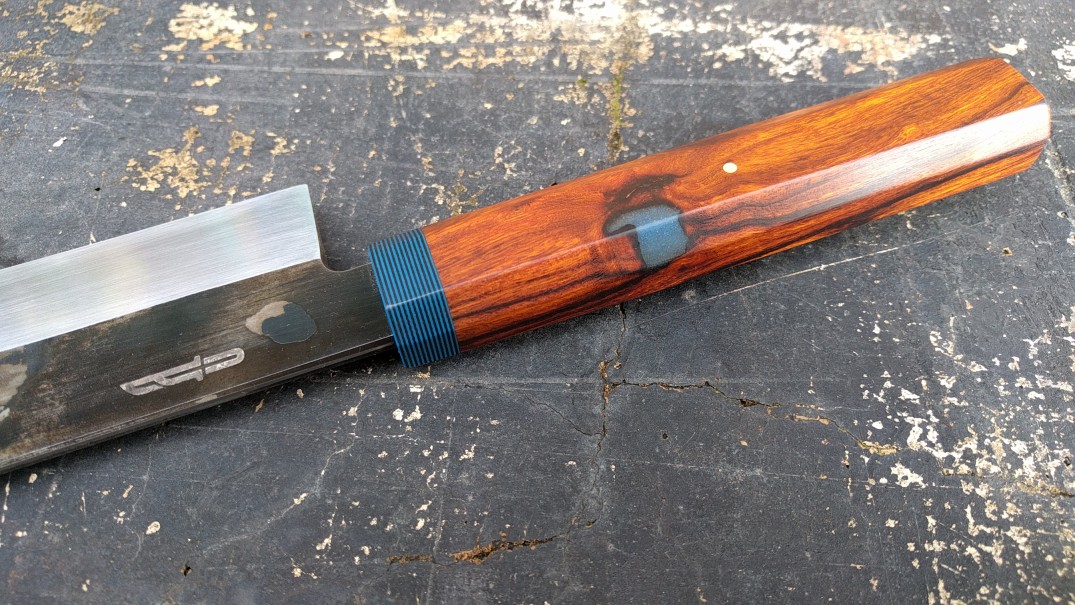Pardon my thread necromancy- But this existing thread seems appropriate to my next question:
Dessert Ironwood is known for dimensional stability. But it comes in smallish pieces, usually has defects, voids, checks. Expensive too.
Looking for some other known dimensionally stable hardwoods, I read about a South African tree called variously "Kiaat", "Muninga" or "Mukwa", Latin species name is Pterocarpus angolensis.
https://www.wood-database.com/muninga/
Decent Janka hardness, yet density is low enough not to throw a knife's ballance totally out of whack. Pretty-ish grain too, not terribly toxic or irritating either.

I can find listings on ebay or Etsy for finished wood products, furniture, art works... and 3/4" x 3/4" x 6" long pen blanks. Not finding anything large enough for a wa handle. On alibaba, all you could want is available! With a minimum order being one 25 metric ton, 40' long shipping container loads of logs...
Has anyone seen this wood offered as turning blanks or other kitchen knife handle sized pieces in the USA? There ARE a couple of fixed blade knives using this wood listed on ebay.
---------
I also found real lignum vitae being listed on ebay by people in Jamaica. Regrettably, the sellers which are affordable don't have certification allowing the (endangered species) wood to be imported into USA, so it wouldn't likely arrive.
Available wood, stable without plasticizing, cheap. Pick any two qualities?








